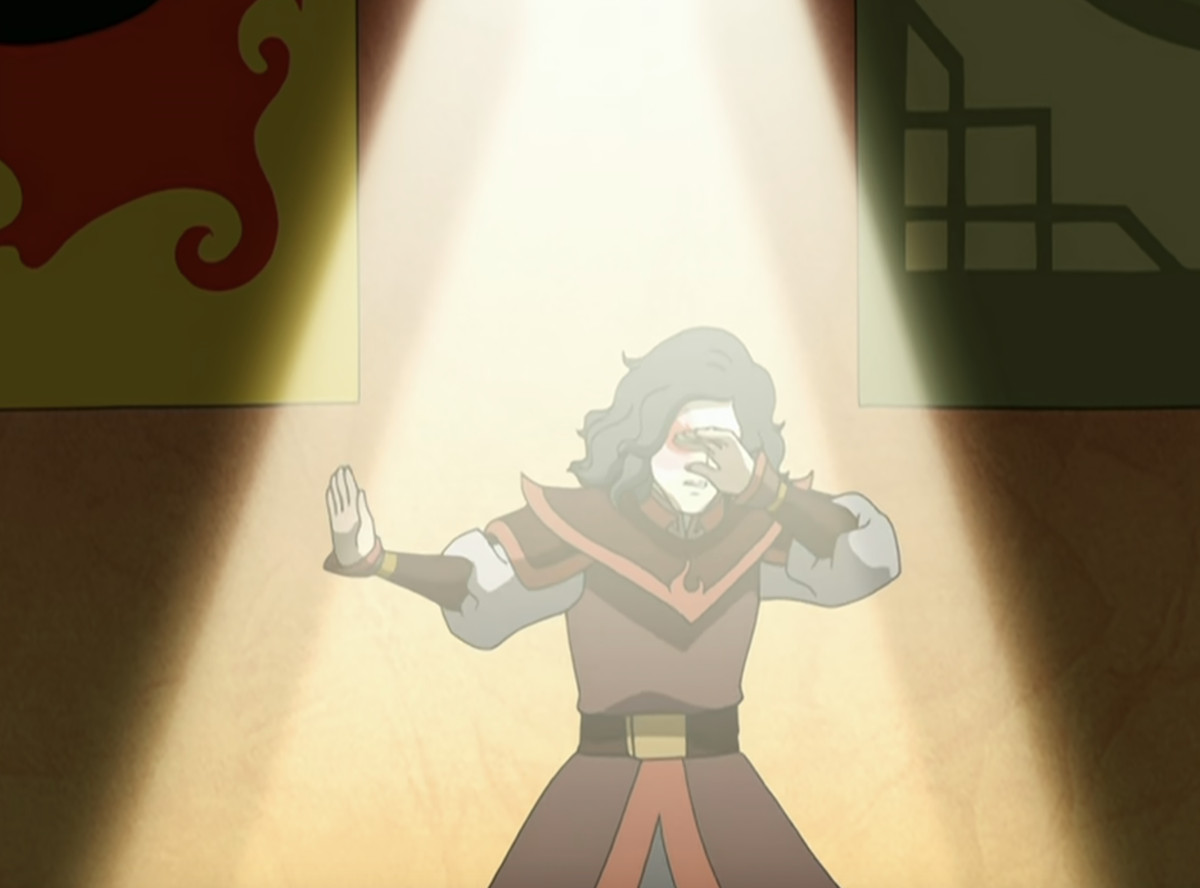Weeks after its release, the general consensus about Netflix’s Avatar: The Last Airbender seems to be: Well, at least it’s better than the infamous M. Night Shyamalan version! A low bar, but at least it was cleared.
But why is it so hard to adapt Avatar: The Last Airbender? It could be the scope. ATLA is sprawling, taking place over three 20-episode seasons. Condensing even a single season into a movie or an eight-episode drama means losing some pivotal character moments (even if ultimately the run times between seasons might be similar). Plus, there’s a lot that animation brings to a story that can’t ever be replicated in live action.
But the great thing is that the perfect ATLA adaptation already exists — it’s just in the source material itself.
Yes, I’m talking about the Ember Island Players’ adaptation in “The Ember Island Players.” It’s a beloved episode, one that appears towards the end of the final season, in which Aang and his friends catch a stage adaptation of their exploits. Functionally, it serves as a recap episode to refresh audiences before the big finale. But it’s also just a good episode in and of itself — and more importantly, a solid adaptation of the events of ATLA, a feat that no adaptation has managed to pull off.
Image: Nickelodeon Animation Studio
“The Ember Island Players” isn’t a simple clip show. It’s self-aware, but in a very loving way, because it leans on what the characters perceive about themselves and the world. The characters see themselves onstage, reduced to one main character trait (Sokka = hungry, Katara = emotional, Iroh = also hungry), and react hilariously. Zuko protests that this stage version is too serious, only to hear the actor shout the phrase he just said moments ago.
The episode also takes the scenes we know and are familiar with and puts a twist on them. The whole point is it’s a really bad stage show, which means the big plot beats are all interpreted in hilarious and out-of-pocket ways, and the “special effects” are all done within the realistic limits of a theater production, which means puppet Momo, lion dance costume Appa, and twirling streamers instead of elemental bending. But additionally, there is the clever angle that this is the events of ATLA as seen through the eyes of the Fire Nation — which means when it’s purposefully bad, we can laugh along with it. It’s not trying to be better than the original at all.

Image: Nickelodeon Animation Studio
Maybe that’s where every other interpretation of ATLA fails. They both tried to improve upon an already good story told in the perfect medium. Meanwhile, “The Ember Island Players” — by virtue of being a show within a show that’s not really trying to do anything new except remind viewers what they’ve just been watching — excels, because it knows it’s always going to be paying homage to a very good show instead of trying to be something amazing on its own.
By virtue of being within the show itself, “The Ember Island Players” knows its audience: the people who already know and love Avatar. There’s no waffling on if this is a show for people new to the source material while striving for authenticity. There’s no back-and-forth on if this is a dark, gritty show where they burn people alive (over and over). It has a clear purpose and focus, something to say within its source material (even if the people putting it on don’t realize). And most importantly, by watching it, we learn more about the characters we already know and love.
We as a society should stop trying to adapt ATLA. It’s already so good that it adapted itself in the best way possible.
